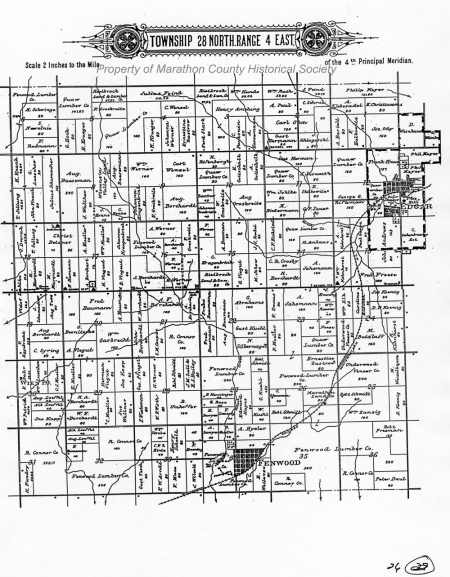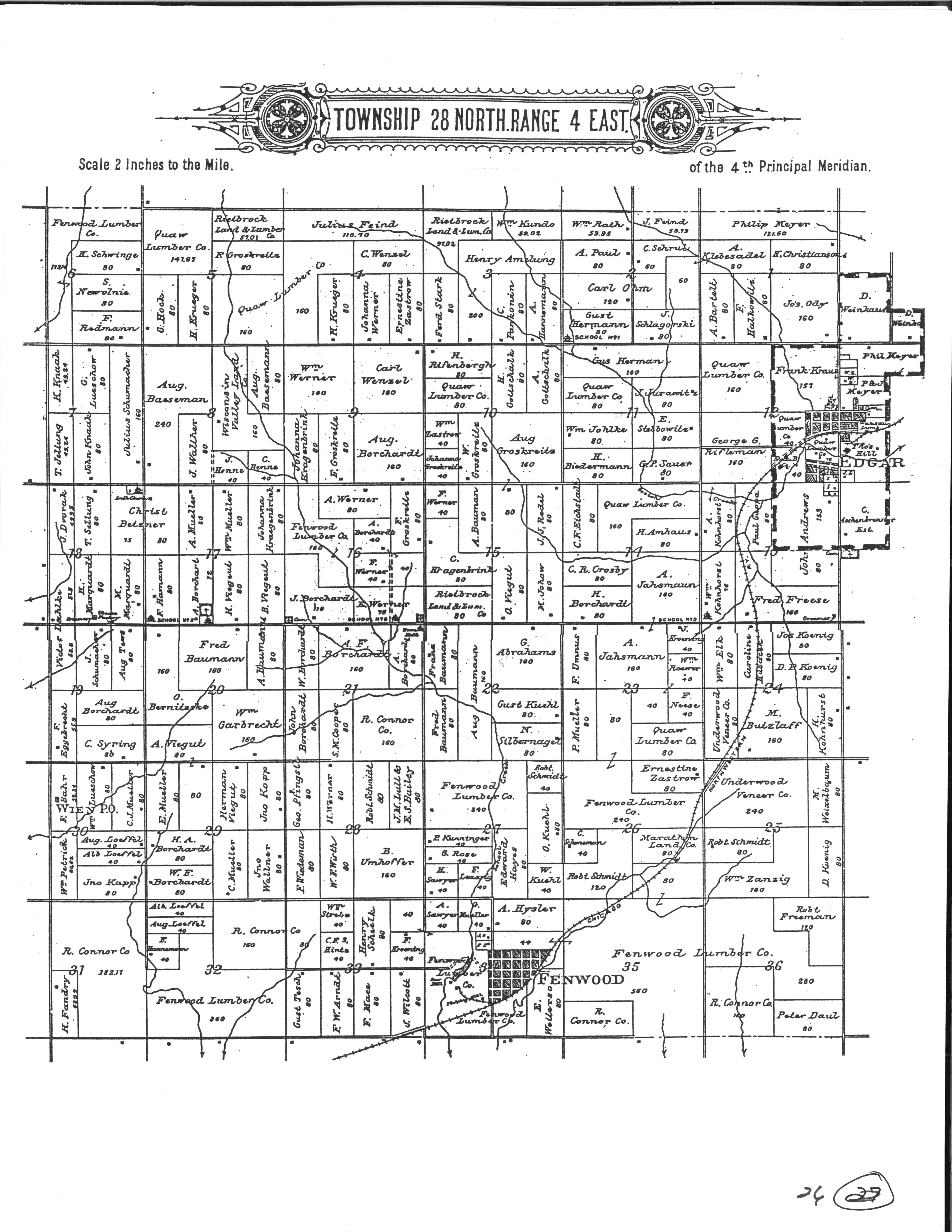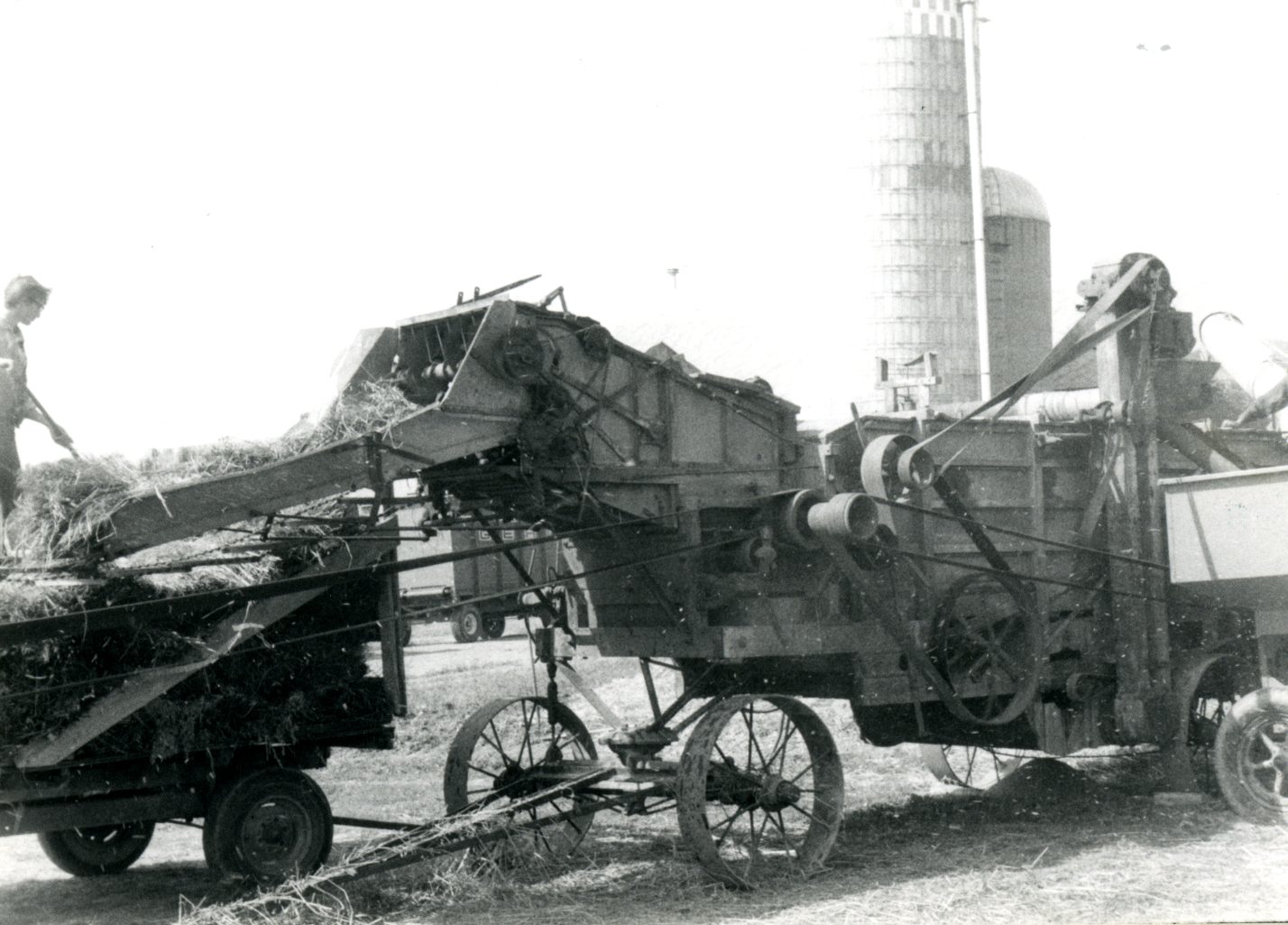Search our Places Database
Wien, Township of
Return To List of Locations | Back to Search
For more information on this location, please contact our research library.

Author:
Mary Moltzan
Location:
T. 28 N. - R. 4 E.
Formallized:
November 12, 1867
Background:
Population: 1900 - 965 plus 478 Village of Edgar and 198 Village of Fenwood, 2000 - 712 plus about half of 1386 Village of Edgar (Balance in town of Cassel) and 174 Village of Fenwood.
German immigrants in Pittsburg formed a club in the mid-1850's. Each member put in $110 to purchase land in the "New West" which had been grossly over advertised, showing plats of a steamboat landing, a church, schools and markets but not dense forest. . To their surprise, these earliest settlers could only reach Marathon City from Stevens Point by canoe with the aid of a Native American.
Amid this group of Germans were a few men who did not belong to the club. One of these was Mathias Halkowitz who had come to Pittsburg from Vienna, Austria. He had been a ladies' tailor. Wishing to get away from the crowded city life, he took land further west. This land was eight miles west of Marathon City. He called this land "Wien," meaning Vienna, the capital of Austria, noted for its science, music, and literary culture. The overly exaggerated advertisements had led him to a land of complete wilderness. That same year he returned to Berlin, Wisconsin to wait for other settlers. Jacob Duernstein was the second settler in the township followed by Charles Marquardt, Fred Hamann, and William Garbrecht.
First Public Official:
William Garbrecht, Chairman
Biography:
See Background
Post Office Established:
August 31, 1876
First Postmaster:
Carl Marquarett
About The Post Office:
Called Wein (depending on the reference, it is spelled Wien or Wein), the P.O. was located in NW 1/4, Section 30. It was discontinued on September 30, 1902 with service from Edgar. See also villages of Fenwood and Edgar.
Railroad:
In 1889, the Milwaukee Lakeshore and Western Railway Company staked out a railroad between Wausau and Marshfield.
See Villages of Edgar and Fenwood
Churches:
1. Lutheran church - Section 18, NE corner
2. St. John American Lutheran Church - Located in Section 17, the first building was dedicated on December 6, 1885. The second building was dedicated in 1926.
3. St. John Evangelical Lutheran Church was organized in 1869. People first met in homes. The church congregation split in two, with one group worshipping in the town hall, Section 16. A white, frame building was built in 1886 and served as their church until 1908 when a brick church, located on County Hwy. N, Section 16, was built.
See also Village of Edgar.
Schools:
1. St. John American Lutheran School was built and classes were held in 1890.
2. St. John Evangelical Lutheran School first opened on September 13, 1920.
The Township School Government was adopted on May 21, 1872. The districts were first known as sub-districts, then districts by number. Later in the 1920's a proper name was given to each: Scotch Creek, Section 2; Farrell Lamont, Section 17; Briggs, Section 29; and Strupp, Section 16.
During the early years, districts were rezoned often as other townships were formed. School began in October or November and was in session for 6 months. In 1900, they were in session 7 months. The subjects of English and German were highly stressed and had to be taught each week along with the basic R's.
Some of the school buildings were rebuilt, remodeled or the districts joined together as one. The schools were closed in the 1950's and 1960's. By 1962, all the township schools joined a high school district.
See Village of Edgar
Industry:
Logging
Sawmills
Cheese factories, after farming was established
See villages of Edgar and Fenwood
Farming:
In the beginning, it was a hard life even for the strong, healthy and young. Men worked in sawmills to sustain bare life. Land had to be cleared and cultivated. Men brought back cattle taken in payment for work. Money was a rarity. Even with all the hardships, they stayed, worked, and provided. By the year 1880,a rich fertile farmland with hard working people was developing. Population had reached 452.
See Village of Edgar
Stories:
With no physicians close by, sickness and disease brought many heartaches. Death was often considered a merciful act of God. Early records from 1902 show small pox and scarlet fever plentiful in the township. The year 1910 found homes placarded for typhoid fever, diptheria and measles. The school had to be fumigated and the teacher disinfected. The year 1920 brought cases of Spanish influenza.



